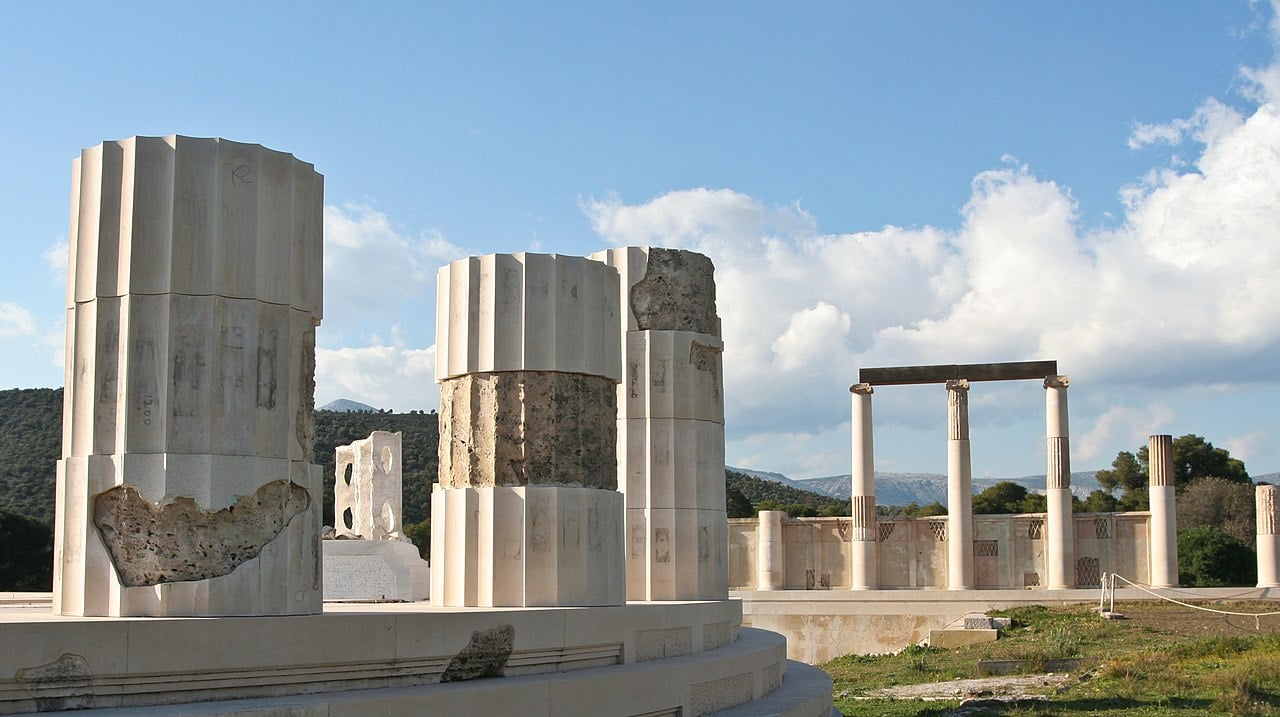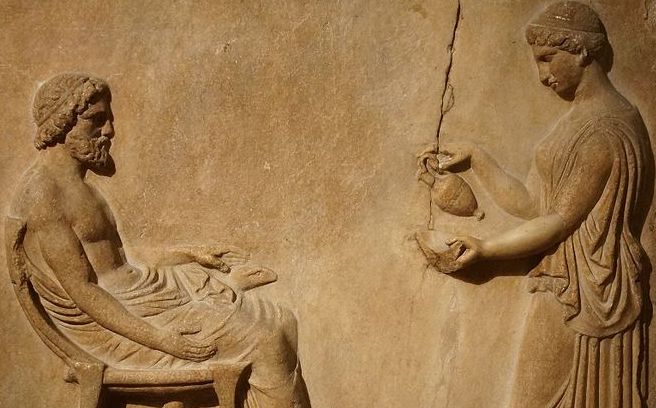
Snakes have held significant roles in the mythology of many ancient cultures, including in ancient Greece, where they were even used to heal the sick.
Around the world, the reptiles are often seen as symbols of healing, transformation, or fertility. In the ancient Greek Minoan civilization, which lasted on the island of Crete from about 3,500 BC to 1,100 BC, snakes occupied a place of great importance.
One of the most iconic images from Minoan culture is the “Snake Goddess,” a bare-chested woman holding two snakes over her head.
Perhaps the most well known snakes in ancient Greece, however, are those that were used for healing rituals in the temples dedicated to Asclepius.
Ancient Greek healing god Asclepius associated with the reptiles
Asclepius, son of the god Apollo, was an ancient Greek hero who was known as the god of medicine. Linked to snakes, his staff entwined with the reptiles is still commonly used as a symbol for medicine today.
The healing god was the father of five goddesses related to medicine and health — Hygeia, the goddess of cleanliness; Iaso, the goddess of recuperation; Aceso, the goddess of the healing process; Aegle, the goddess of good health; and Panacea, the goddess of universal remedies.
Much like the god himself, snakes were also associated with healing in the time of ancient Greece.
Those who were suffering from illness and disease would make pilgrimages to temples of Asclepius. The cult of the god became especially popular around 500 BC, when a large uptick in visits to his temples was recorded.
There were over 300 Asclepeia, or temples to the god, across the ancient Greek world. The most famous of all such healing temples is found at the ancient site of Epidaurus, which is also home to the renowned theater — which is still in use today.
Other notable Asclepeia include one found in the city of Trikala, which was likely the most visited in antiquity, and one on the island of Kos, where Hippocrates, the father of medicine, was from. Some historians believe that Hippocrates may even have begun his career as a physician in the Asclepeion on Kos.
In fact, his Hippocratic Oath, the earliest text of medical ethics in the world, begins by invoking a variety of gods, including Asclepius:
“I swear by Apollo Healer, by Asclepius, by Hygieia, by Panacea, and by all the gods and goddesses, making them my witnesses, that I will carry out, according to my ability and judgment, this oath and this indenture.”
Snakes used to heal the sick in ancient Greece

When visiting an Asclepeion, pilgrims would first make offerings and sacrifices to the god, and then they would sleep in the inner sanctuary, the holiest part of the temple.
Non-venomous snakes would freely crawl over their sleeping bodies, licking them along the way. It was believed that contact with the snakes, as well as being licked by the reptiles, would help cure the sick.
Snakes’ licks to the ears and eyes were also thought to bring about “second hearing” and “second sight,” or more attuned versions of the senses.
After awakening, the patients would then report their dreams and symptoms to a physician at the temple, who would prescribe a remedy or treatment to ease their pain.
Snakes were an integral part of the healing process, and the reptiles were introduced to each new Asclepeion dedicated to the god in ancient Greece. In some temples, sacred dogs would also lick patients.
It is believed that snakes were linked to renewal and health in antiquity because they routinely shed their skins. Snake venom was also routinely used in ancient Greek medicine to cure various ills.